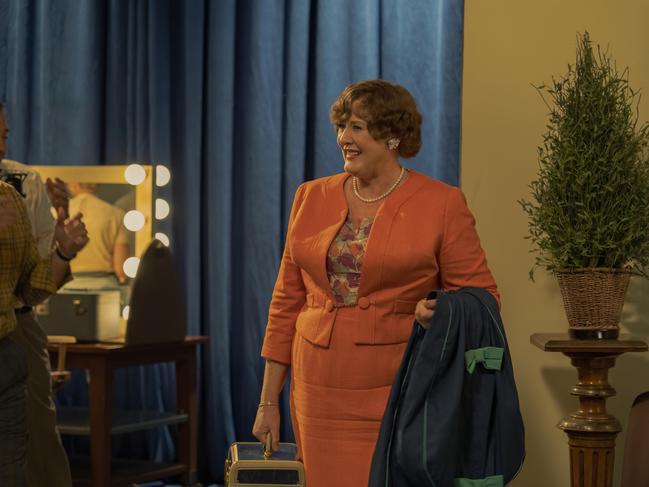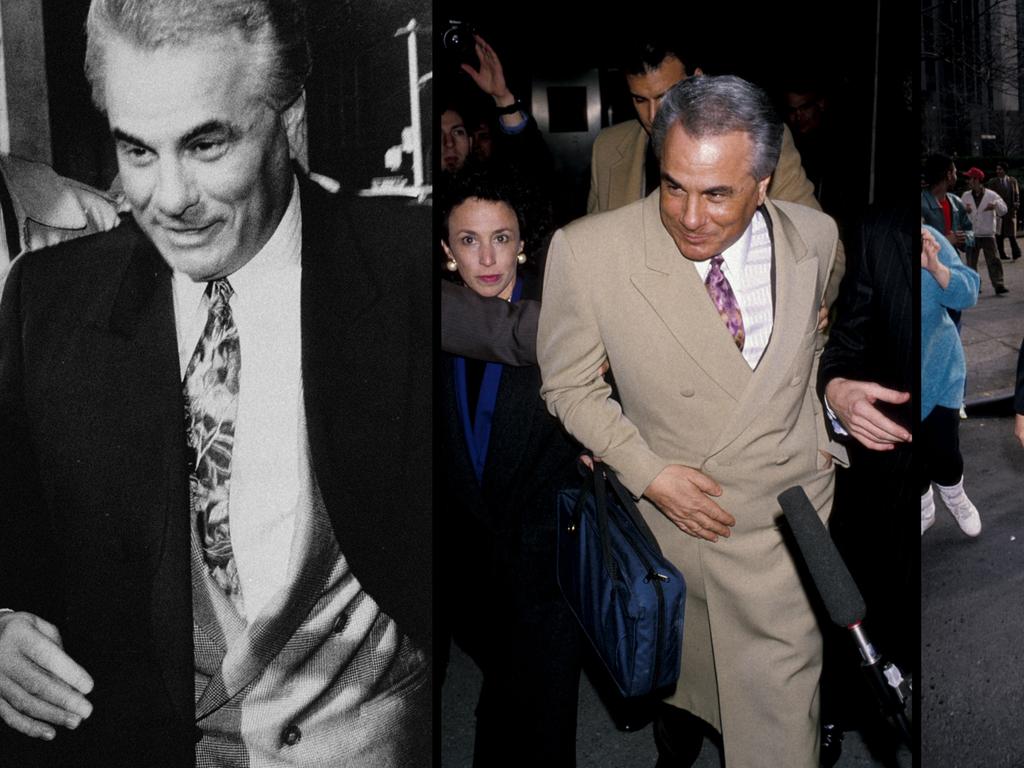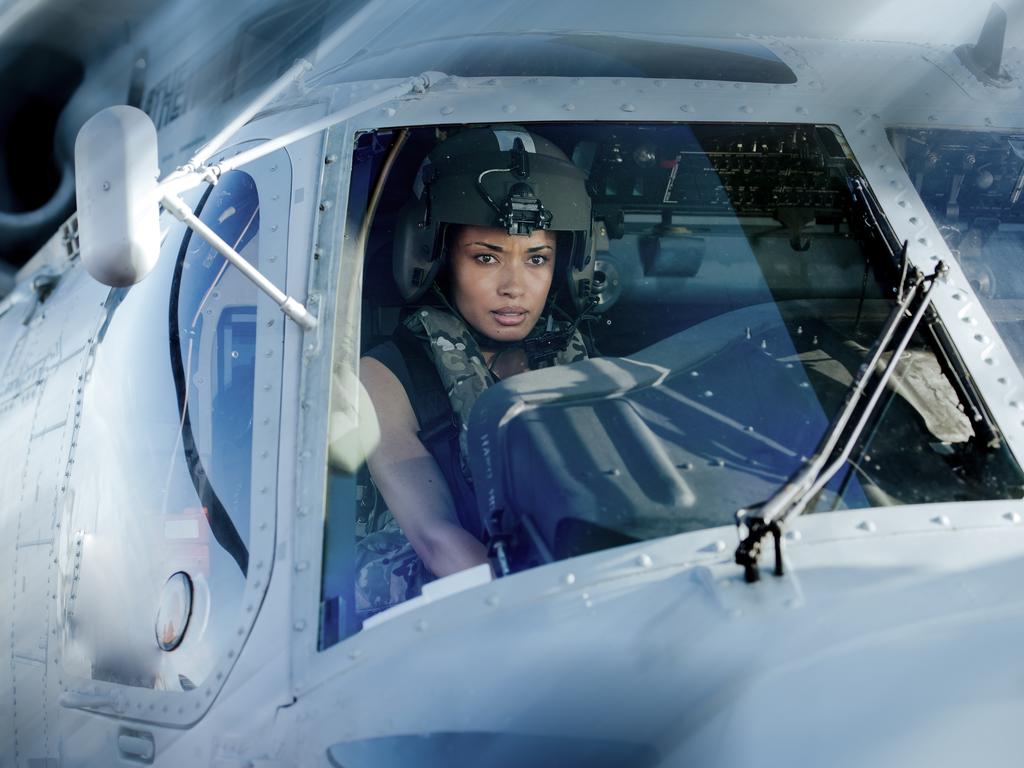TV review of Julia: A divine second helping
A pinch of 1960s unrest adds to the intense flavour of the sophomore season of the show about TV chef Julia Child.

She was fond of a good line and an expert at turning conversation into humour, the trick of all good TV presenters – she liked to describe herself as “a natural ham”. “I think every woman should have a blowtorch”, was good, so was “I believe in red meat; I’ve often said: red meat and gin”, and I like, “It’s so beautifully arranged on the plate, you know someone’s fingers have been all over it.”
And when the great American TV cook Julia Child was stuck for a word, or momentarily dried, that oddly wobbly voice momentarily silenced, she would just throw to the crowd and something new was created out of this seeming embarrassment. “I’m lost, totally lost,” she would say, and then, laughing like she’d burst a vessel, look to someone off camera, suddenly like a shoplifter denying that anything had happened, her hands raised.
Mistakes were part of the presentation, and the audience loved her for it. (Off camera she was ribald and loved to swear. In her authorised biography, writer Noël Riley Fitch tells of the way she once plucked cannelloni out of a pot, exclaiming, “Wow, these damn things are hot as a stiff cock”.)
She loved words, writing more than a dozen cookbooks and an autobiography covering her time in France, and multiple biographies, a volume of letters, and hundreds of interviews.
And, of course, there’s the nearly four decades of her television appearances, which first aired in 1963 on Boston’s public-television station GBH-TV, now a major public broadcasting station, then an aggregation of Greater Boston’s universities and museums. It possessed a federal mandate to make culturally educational programs, still unsure of its role as the moral, ethical, and political struggle between non-commercial and commercial broadcasting rumbled.
And now the delightful Julia returns for a second season continuing the story of the iconic chef and author who taught American television audiences the art of cooking with The French Chef. And who turned cooking into prime-time television entertainment; as the New York Times said in its obituary, she was the “tall, exuberant woman who could make lobster bisque look as easy as toast.”
The show was created and written by Daniel Goldfarb, best known for his work as writer and producer on The Marvelous Mrs Maisel, another comedy drama about a woman’s journey, with Chris Keyser, who worked on shows like Party of Five and The Society, as executive producer and showrunner. Stylistically in charge is actor turned director Malanie Mayon, now a specialist hand at episodic TV, working on not only procedural cop shows but many half-hour comedies as well as character-driven drama. And she’s good here, her framings as witty and as idiosyncratic as her lead character.
And the brilliant, cohesive ensemble cast returns, headed by the consummate British actor Sarah Lancashire (Happy Valley) as the lanky Child, a performance of grand appetite, and Frasier’s David Hyde Pierce as Julia’s loving husband, former diplomat Paul. And Bebe Neuwirth, also from Frasier, is again Child’s best friend and confidante Avis De Voto, her intimate soulmate. Stylish and sharp-witted, her hair always meticulously structured, she loves a bit of banter, handles a martini glass with elegance, and clicks off caustic one-liners with the lift of an immaculate eyebrow.
Isabella Rossellini is a nice low-key Simone Beck, also known as Simca, featuring once again after her delightful cameo in the first season. She’s herself the author of captivating and definitive books about French cooking, Child’s close friend and collaborator after a chance encounter took place when she met the Pasadena-born American at a party in the Bois de Boulogne.
The two women rapidly forged a deep bond, becoming like sisters – “We were a pair of cooking nuts,” Child said – and began work on their Mastering the Art of French Cooking, that would teach Americans how to make authentic-tasting French food in their kitchens using American ingredients.
Like the first season, the series is still centred on the central relationship between Child and her husband, and the way marriage at a certain age either evolves or dissipates as the dynamics of the relationship alter. Now though, there’s the feeling that every relationship requires a mutually held sense of purpose to bind the couple together.
But Julia now also touches on many other ideas. Keyser and Goldfarb gently weave in issues including LGBTQ+ rights, the use of psychedelics, the beginnings of the student backlash to the Vietnam War, and feminism into the comedic mix.
“Our desire is for you to watch the show and feel as if you’re watching a souffle and then you realise that there’s something underneath it that’s presenting a little bit of a message,” says Keyser.
The over-arching theme is change, both personal and professional, as all the central characters try to make sense of where they find themselves in the early 1960s. And how they must alter their lives to accommodate the times – as Paul says, “to walk two steps ahead of it”.
The season starts after the death of President Kennedy but it’s before America becomes radicalised by a transformative activism as it begins to pursue an interventionist foreign policy, turning its focus to Asia and Vietnam as the pressures of civil rights and racial equality, along with the women’s movement, begin to stretch the fabric of American society.
And TV itself is in crisis, trying to understand the way it reflected the world was changing too. It was little wonder it was still called “the idiot box”. And despite becoming the object of intense debates over education, racism, technology and politics, mainly because of the notorious quiz show scandals a loss of faith was experienced by civic leaders, educators, and many influential intellectuals.
The influence of sponsors had undermined the public and the government’s trust in the integrity of commercial broadcasting, revealing that TV was fictional, engineered, and manipulative.
As Keyser says, Julia is set just before the heart of the tempestuous radicalised late 1960s. “So, it’s really – it is an intermediate period where the conversation about ‘What is the world going to be like?’ and ‘What role do I play in?’ felt very naturally part of the conversation. So, we started with that.”
The first episode, Coup En Croute – the title seems to translate as a kind of successful achievement wrapped in pastry, the centrepiece of Julia’s culinary experiments in the opening chapter. Each episode takes its title from a particular recipe. “The theatricality of it mirrors Julia’s theatricality,” according to Keyser.
We find her and husband in an idyllic Gallic landscape, Julia orgasmic as she encounters the ripe smell of peaches in an open-air market, and then cycling through the perfumed landscape with her friend Simca as they head back to her co-author’s house. (The show is filmed on location in areas of Provence, Nice, Cannes, Antibes and Paris.)
She and Paul are staying with Simca and her husband Jean (Nicolas Briançon), while Julia and Simca produce recipes to put in their second book. It isn’t easy going though. Whenever Julia adapts a traditional recipe to potentially appeal to an American audience – substituting chicken for goose in a cassoulet, quelle horreur – Simca is mortified. This is not French cooking. “For me, no cream, no butter, no flavour,” is her stoutly held mantra.
When Simca complains to her husband “I love her like my sister”, he replies: “You hate your sister.” The men feature too, and we’re given a sense of the long-term effect of the psychological trauma for those in the generation that fought World War II, both Europeans and Americans – part of what Keyser calls the underlying “conversation”.
The main action though is back in Boston; in her absence WGBH is in free fall. Station president Hunter Fox (Robert Joy) is warned he must find another show that was as successful as the first season of The French Chef and is having problems finding anything nearly as compelling. Cramming the airwaves with tedious shows about knitting and callisthenics are not the answer.
Julia’s show is the problem. “My board was content when we had nothing, but now that we have something we want more something, less nothing,” he’s told by the chairman played by Craig Bierko, who handles this wonderfully absurdist monologue admirably. “You have a lot of nothing. I want something that makes all the nothing seem like less than nothing.” The harassed, undervalued Alice Naman (Brittany Bradford) has pitched ideas that have strong appeal to the same audience as Julia’s show, but she’s ignored, “one girl in a man’s world”.
They must get Julia back from France.
It’s beautifully directed by Mayon, with impeccable production design from Patrizia Brandenstein and the performances are all not only convincing but possess a kind of empathetic flow. This is acting of the highest quality.
As Keyser says, his show is light as a feather, for all its undercurrent of ideas. “It’s really, in some sense, like cotton candy and it makes you happy and you don’t notice until the end that actually something serious has happened.”
Julia, streaming on Binge.






To join the conversation, please log in. Don't have an account? Register
Join the conversation, you are commenting as Logout